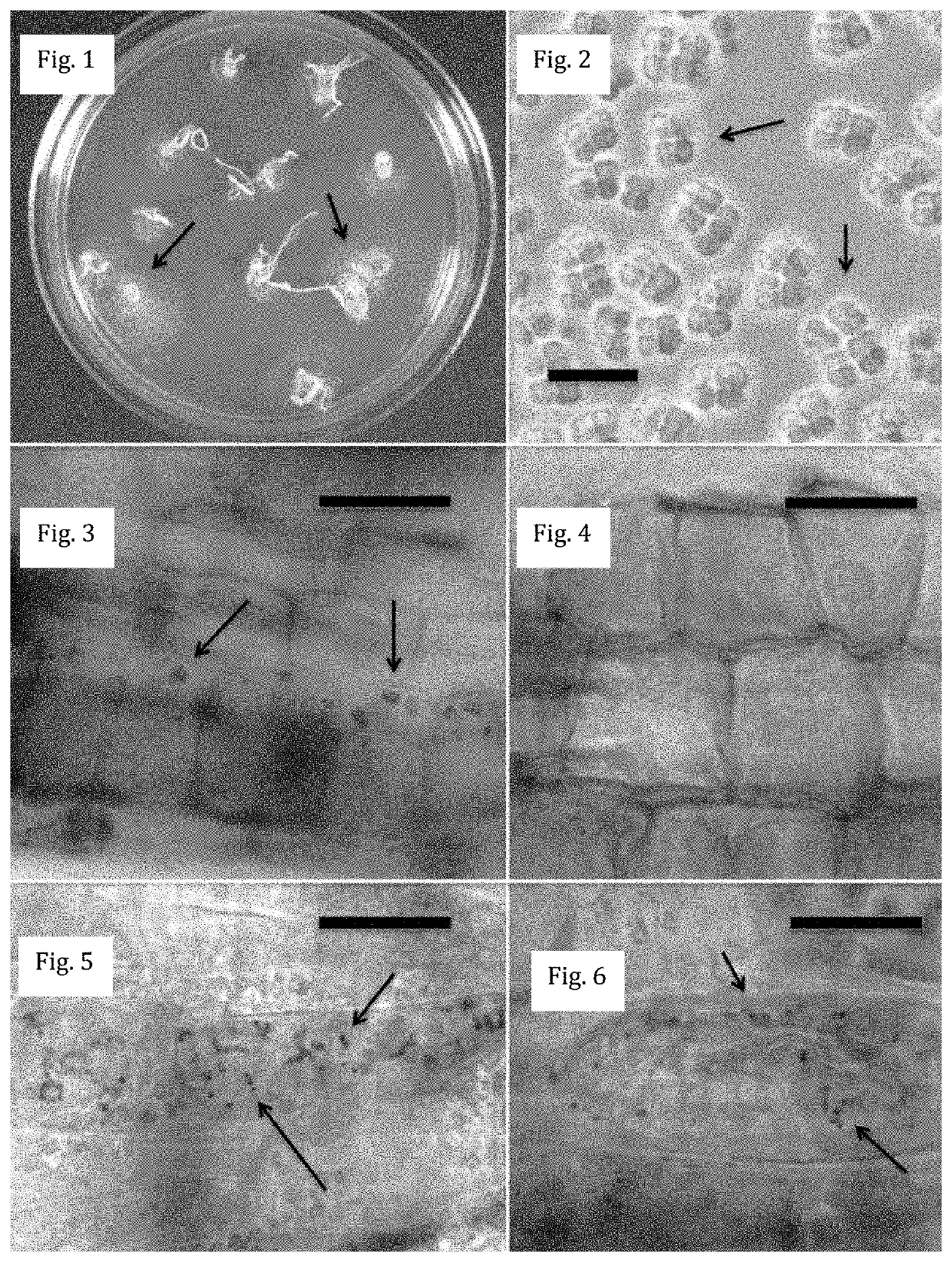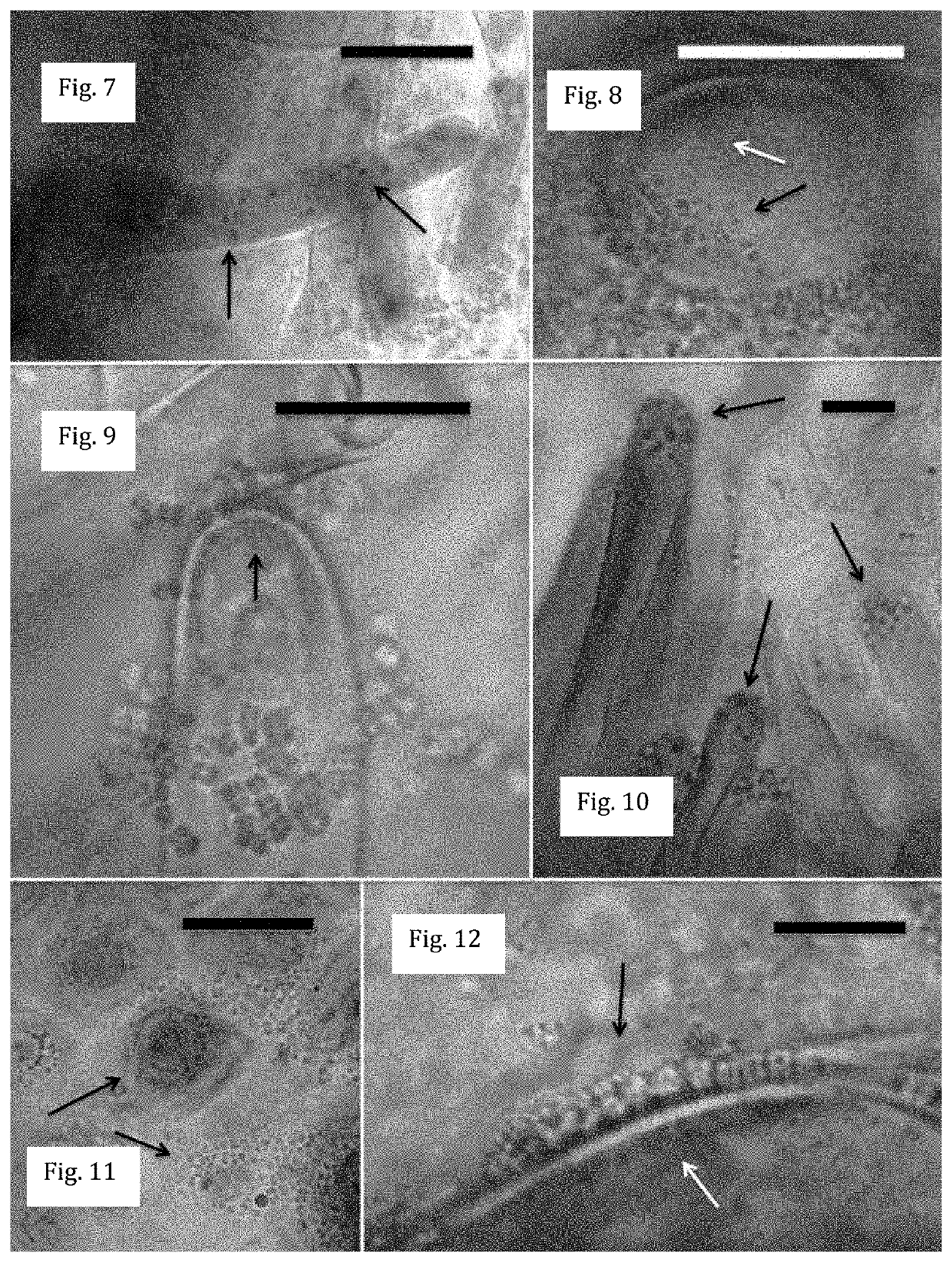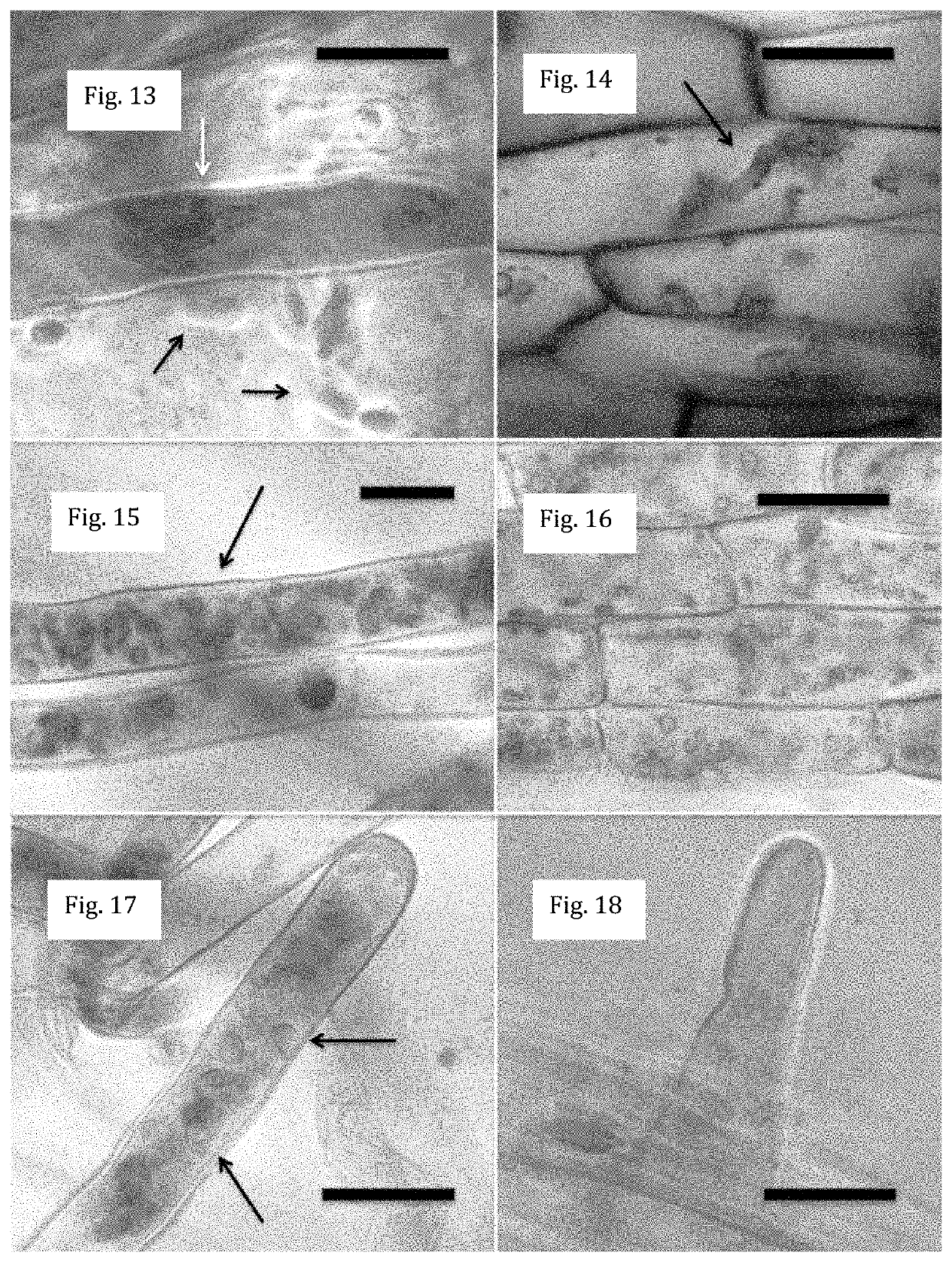Endophytic microbes for growth promotion of crop plants and suppression of aggressive invasive plant species
a technology of endophytic microbes and crop plants, applied in the field of endophytic microbes for growth promotion of crop plants and suppression of aggressive invasive plant species, can solve the problems of seedlings not developing properly, seedlings without their microbes are more susceptible to diseases and oxidative stress, and achieve the effect of improving a competitive advantag
- Summary
- Abstract
- Description
- Claims
- Application Information
AI Technical Summary
Benefits of technology
Problems solved by technology
Method used
Image
Examples
example i
Endobiome Interference
[0075]The process of degradation of microbes within roots has been termed ‘rhizophagy’ (meaning ‘root eating’) (Paungfoo-Lonhienne et al., 2013). The cyclic process where symbiotic bacteria alternate between a free-living soil phase and an intracellular endophytic phase has been termed ‘rhizophagy cycle’ or ‘rhizophagy symbiosis’ (Verma and White, 2018). It seems reasonable—that the primary function of the rhizophagy cycle is the transport of nutrients via microbes from the rhizosphere to the plant root where nutrients are extracted from microbes (Hill et al., 2011; Beltran-Garcia et al., 2014; Prieto et al., 2017). It is also logical that microbes that are symbiotic with plants and function in the rhizophagy cycle are adapted to the host plant and likely show the following features: 1) possess the capacity to enter plant cell walls at the root tip meristem; 2) release electrolytes to plant cells on exposure to ROS secreted by root cell plasma membranes; 3) abi...
example ii
Inhibitory Endophytes in Grasses
[0086]Plants possess seed-transmitted host-adapted native endophytic microbes that associate with plants in the ‘rhizophagy symbiosis’. In the rhizophagy symbiosis microbes enter into root cells at the root tip meristem, becoming located within the periplasmic spaces, between the cell wall and plasma membrane, where root cell plasma membranes secrete superoxide onto bacteria, degrading them. Oxidative degradation of microbes in the rhizophagy symbiosis is thought to be a source of nutrients for plants. The microbes involved in the rhizophagy symbiosis also play roles in modulation of plant development, including stimulation of root gravitropic response (trigger roots to grow downward) and increasing root growth. Introduction of alien endophytic microbes from other hosts into a plant may displace native endophytes and disrupt functions of the rhizophagy symbiosis.
[0087]In this study of endobiome interference in seedlings of the grass Poa annua var. rep...
example iii
Bacteria Associated with Smooth Crabgrass (Digitaria ishcaemum) Seed Inhibit Competitor Plant Species
[0090]Digitaria (crabgrass) species are some of the most competitive C4 weeds of agricultural, horticultural and turfgrass landscapes in tropical and temperate regions. Digitaria ischaemum and D. sanguinalis (smooth and large crabgrass, respectively) are the some of most problematic weed species in the United States and are particularly well adapted to turfgrass systems where as a C4 species they often outcompete C3 grasses and forbs in the summertime (Kim et al. 2002). Digitaria sanguinalis is known to produce allelochemicals that may contribute to its competitiveness but these have not been studied extensively (Zhou et al. 2013a,b).
[0091]Poa annua is another prolific early successional C3 plant that is extremely competitive in turfgrass and horticultural systems and can be found on all seven continents (Chwedorzewska et al. 2015). The success of P. annua as a weed is attributed to ...
PUM
 Login to View More
Login to View More Abstract
Description
Claims
Application Information
 Login to View More
Login to View More - R&D
- Intellectual Property
- Life Sciences
- Materials
- Tech Scout
- Unparalleled Data Quality
- Higher Quality Content
- 60% Fewer Hallucinations
Browse by: Latest US Patents, China's latest patents, Technical Efficacy Thesaurus, Application Domain, Technology Topic, Popular Technical Reports.
© 2025 PatSnap. All rights reserved.Legal|Privacy policy|Modern Slavery Act Transparency Statement|Sitemap|About US| Contact US: help@patsnap.com



